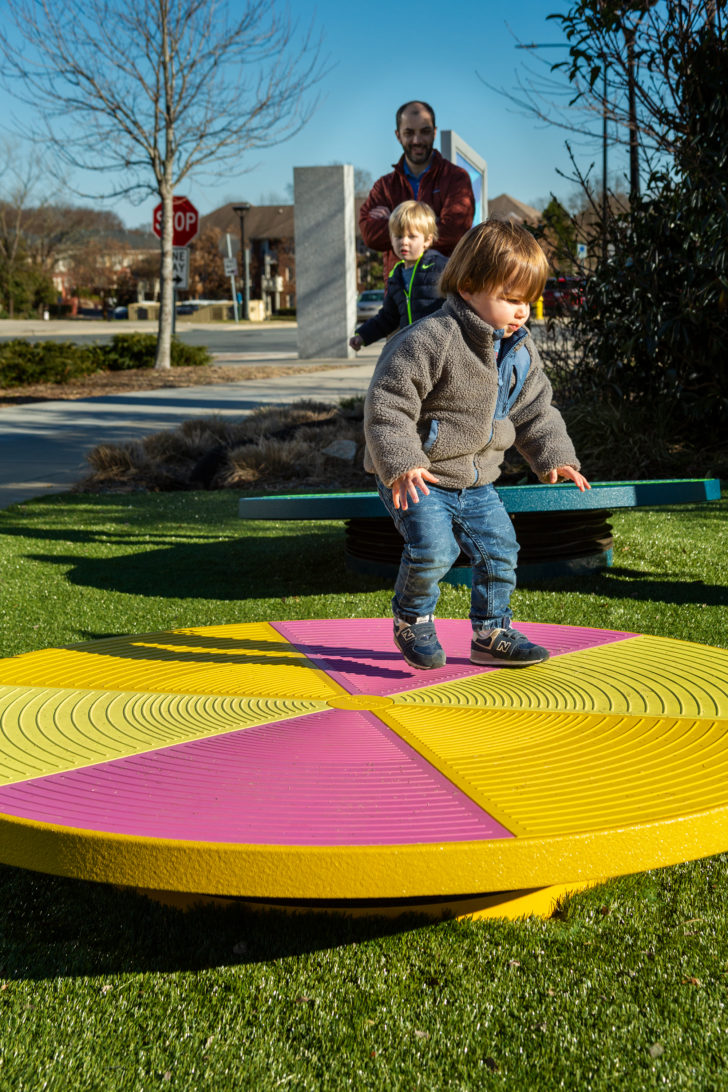
Choreographies for Humans and Stars
Planétarium de Montréal, CA
First Ward Park, Charlotte, US

Balancing Act is an interactive sculpture you can make music with, by sitting, standing, walking or dancing on the disks. You can play solo, or join in a duo or trio with friends or strangers.
Located in downtown Charlotte, the work is part of First Ward Park, a new public space resulting from decades of urban planning, in proximity to the light rail. Contemplating the skyline, on the edge of an open green patch where large events take place, in between schools, librairies, museums, universities and offices, Balancing Act was designed to bring together a vast diversity of publics made of families, friends and colleagues walking around the park, building on this new multigenerational and mix-used public place.

An opportunity to meet, play and connect, this series of coloured disks, each fixed to a central pivot point, offers a test of balance. Imagined as an interface for collaborative music making, this new genre of synthesizer invites participants to use their entire body to play music. When the disk rests against the edge of the base, it plays a note. By walking around the edge, one can string the notes together into a melody. When the disk is parallel to the ground, a melody is unlocked and plays for as long as the disk is balanced. The longer you keep your balance on the disk, the more the melody changes.

What does balance sound like? How do you know you’ve reached balance through sound? We started by building different prototypes using samples of piano, violin and even accordion melodies that could be triggered by the moving disc. But because this object is so alive and moving with such subtlety, the use of pre-recorded samples was limiting our ability to capture the nuances needed to map the motion of balancing. We were using steps but we needed a ramp. This led us to move from “the record player” towards creating a real musical instrument: a subtractive synthesizer and its myriad range of sounds and parameters, which allowed us to capture what we think balancing sounds like.









